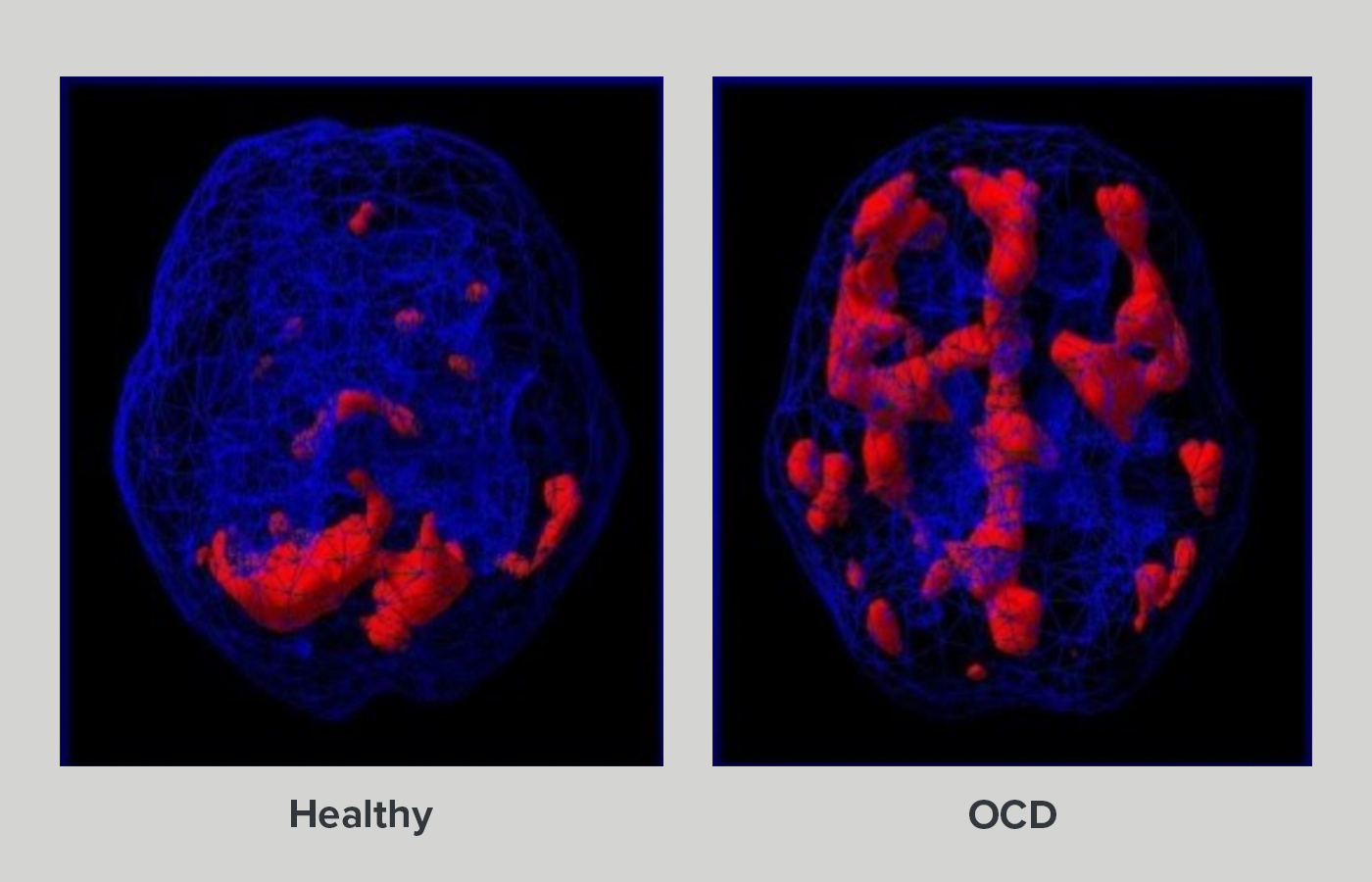Obsessive Compulsive Disorder (OCD)
Obsessive-Compulsive Disorder (OCD) is treated at the TheraMind Center of Santa Monica using TMS therapy to inhibit overactivity in specific brain areas which have been identified as being associated with this often debilitating condition.
What is Obsessive Compulsive Disorder (OCD)?
Obsessive-Compulsive Disorder (OCD) is a type of Anxiety Disorder. OCD sufferers have intrusive thoughts and often the urge to repeat specific behaviors which disrupts their lives and damages personal relationships. It is estimated that OCD affects 1.0% of the U.S. adult population or roughly 2.2 million people. [1, 2] Some common OCD rituals include repeated counting, washing hands or arranging items. There are many signs and symptoms of OCD which can vary and fluctuate in intensity over time.
OCD symptoms include:
- Uncontrolled thoughts or behaviors
- Inability to stop a behavior or thought even when recognized as excessive
- Spending at least 1 hour a day on a particular thought or behavior
- Finding little or no pleasure from compulsive rituals
- Thoughts or behaviors leading to problems in daily life
- Motor or verbal tic, i.e. eye twitching, shoulder shrugging, throat clearing

The above image shows healthy versus OCD brain activity.
Historical treatment
Historically, OCD has been treated using drug therapy and cognitive behavioral therapy (CBT). Today many physicians treat OCD with alternative therapies such as TMS. Treatment of OCD with TMS therapy has fewer side effects and a greater positive impact than traditional drug therapy alone for many patients. Physicians had been successfully treating OCD using TMS therapy for years prior to FDA approval. In 2018, following a multi-site, double blind, clinical trial—in which one of TheraMind’s affiliated physicians acted as a principal investigator—the FDA approved the use of TMS therapy to treat symptoms of OCD. [3]
Our approach
Physicians at the TheraMind Center of Monica successfully treat patients suffering from OCD using TMS therapy. In most such cases the TMS therapy is informed and targeted by prior functional MRI imaging (fMRI), one of our advanced diagnostic tools. Using the fMRI imagery, individualized treatment protocols are developed to reflect each patient’s unique neurophysiology and specific stimulation targets.
Results
Prior to 2014, clinical trials using TMS therapy for OCD reported mixed results depending upon a number of factors, including: frequency of treatment (1 Hz or 10 Hz); location of treatment (Left DLPFC, Right DLPFC, pre-SMA, orbital frontal); number of treatment sessions; number of pulses per session; and the presence or absence of co-morbid conditions (e.g. depression). [4] Since that time a number of clinical studies demonstrated the efficacy of TMS for OCD, and by August, 2018 the FDA had approved the use of TMS for OCD, as mentioned above. [3]
References
- “Anxiety Disorder Statistics 2019 – U.S. and Worldwide.” MindfulSearching.com, Mindful Searching. https://www.mindfulsearching.com/anxiety-statistics/
- “Facts and Statistics.” ADAA.org, Anxiety and Depression Association of America. https://adaa.org/about-adaa/press-room/facts-statistics
- “FDA permits marketing of transcranial magnetic stimulation for treatment of obsessive compulsive disorder.” FDA.gov, U.S. Food and Drug Administration, August 17, 2018. https://www.fda.gov/news-events/press-announcements/fda-permits-marketing-transcranial-magnetic-stimulation-treatment-obsessive-compulsive-disorder
- Jean-PascalLefaucheur, et al, “Evidence-based guidelines on the therapeutic use of repetitive transcranial magnetic stimulation (rTMS): An update (2014–2018),” Clinical Neurophysiology, Volume 131, Issue 2, February 2020, Pages 512-515.
